What is a Skid Steer Used For? – [Updated for 2023]
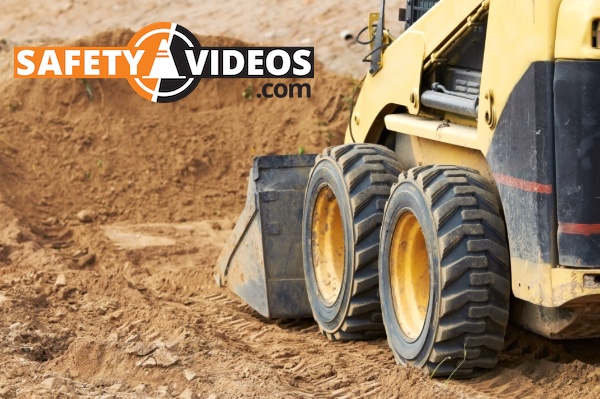
Construction equipment is used for a variety of purposes, such as lifting heavier loads, traversing uneven terrain, and handling materials. If you’ve seen a job site before, you’ve likely seen a skid steer loader before.
This equipment has many functions and different attachments that can be used to accomplish various tasks. Skid loaders are designed with other attachments to complete construction and landscaping projects. In this article, we’ll delve into the details of what skid steer loaders are used for and how they work. Oh, and we also offer a skid steer safety training course that you should check out as well. Finally, if you are looking for a toolbox talk on skid steers, we have a write up on that which you can share with your crews for a quick safety meeting.
What is a Skid Steer?
A skid steer loader is a piece of construction equipment used to dig. The design is light and easy to use in tight spaces due to its maneuverability and compact size. The reason it’s called a “skid steer” is because, typically, there is no traditional steering mechanism present in the machine.
The machine can be used for various purposes, like site development, lifting materials, and interior demolition. The benefit of compact equipment like skid steers and track loaders is that they can work in tight spaces.
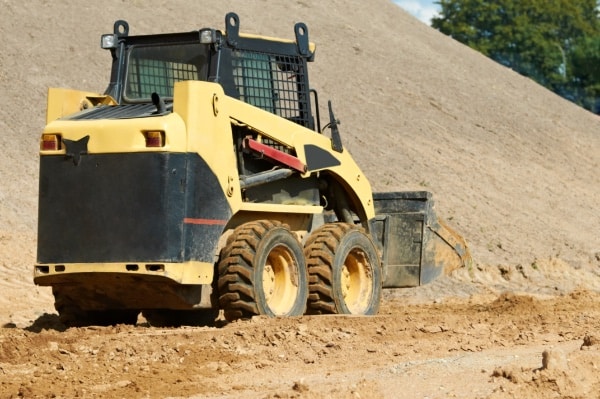
How Do Skid Steers Work?
A skid steer generally has four wheels or two tracks that will be used to maneuver around a job site. A compact track loader is a type of skid steer that uses two tracks instead of four wheels to move. On your average skid steer, the front and back axles are locked together on both sides so that they move in sync with each other. They are locked in a fixed straight alignment fashion so that opposite sides are operated separately.
To turn skid steers, the operator must speed up one side, like the right skid steer, to get the machine to turn. The opposite side will move at the same speed unless the operator alters it. Compact track loaders move the same way, speeding up one side of the track so that the machine “skids” across the ground. Once the turn is complete, the operator returns to moving both sides at the same speed.
Different Types of Skid Steers
Different types of skid steers can be used at a job site to complete the work at hand. Skid steers come in all sizes for different scale projects. The load capacity varies on the model, and the right attachment will make all the difference. Deciding on which skid steer is right for your future projects is half the battle, making sure you can accomplish what you need to.
Small Frame Skid Steers
A small frame skid steer weighs less than a ton and clocks in at less than 50 horsepower. This lighter model is best for interior work and landscaping due to its size. Other equipment may work for the more detail-oriented aspects of interior work, but other machines can’t compare to the compact, convenient size of a smaller frame.
Larger models are not as maneuverable as this type of skid steer, making it ideal for working in tight spaces and utilizing various attachments to complete the job. The small frame makes it easier to handle other materials and attachments.
Medium Frame Skid Steers
Larger loaders with a medium frame can utilize more horsepower than their smaller counterparts. With this additional power, and the right accessories, a medium-frame skid steer can handle heavier material handling. Larger models can handle moving heavy equipment in tighter spaces, similar to a small frame skid steer.
Having more power allows these skid steers to use various attachments like a backhoe and digger to work in places where those traditional machines wouldn’t fit. Being able to not only lift heavier loads but utilize the right equipment for smaller spaces means that you can get more work done without having to rent or purchase additional machinery. It can also be driven over asphalt or concrete drives with tires or tracks without the risk of damaging the surface thanks to its lighter weight frame.
Large Frame Skid Steers
When it comes to large loaders, this piece of equipment can lift a much heavier load than other models. The load capacity is greater for these models that are better designed for excavation and demolition. Most large construction and landscaping machinery needs to be transported by semi-truck to work sites. While skid steers’ larger models can weigh between one to two tons, they are still able to be navigated on their own.
A large frame skid loader is capable of completing more complex tasks than smaller models due to its design. Heavy equipment is no problem for a larger skid steer.
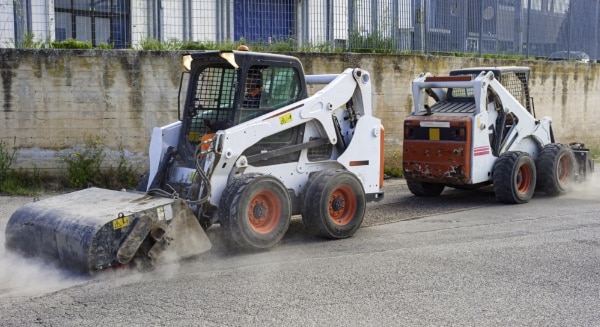
What is a Skid Steer Good For?
A skid steer machine is not just a single-use machine for construction. It can be used for many projects that require demolition and excavation. Through the use of customizable buckets, several tasks and projects can be completed as well. A few of these projects include, but are not limited to:
Construction Work
The steer loader can be fitted with attachments to help speed up the construction process. When using the right equipment, even in tight spaces, construction projects can move along much faster with the help of a skid steer.
Snow Removal
By equipping a skid steer with the right piece of equipment, you can easily remove snow in no time. More than double the efficiency of a traditional, handheld snow blower, a skid loader with the right attachment can turn an entire day’s worth of work into a short job that takes a couple of hours tops. You won’t need to set aside your whole day to do it, and you won’t be as exhausted afterward.
Excavation Work
Thanks to various attachments, a skid steer can be modified to complete excavation work. This versatile piece of equipment can be outfitted for almost any excavation task so long as it does not over exceed the rated operating capacity of the machine.
Landscaping Projects
With attachments like the tree spade and stump grinder, landscaping is a breeze when using modified skid steers. With their multiple attachments for customization, lightweight frame, and maneuverability, a skid steer is perfect for working in areas that need additional attention to detail in a small space.
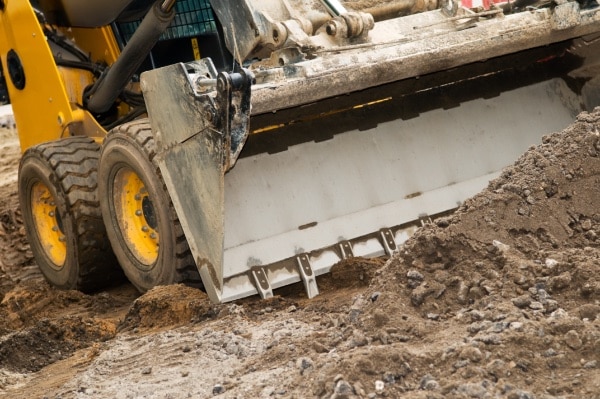
What Are the Different Skid Steer Attachments?
While primarily used for digging on a job site, there are various attachment options available that make a skid steer loader more versatile. It makes more financial sense as well to use a skid steer with attachment options than to purchase or rent a series of machines that can accomplish the same purpose.
Snow Blade Attachment
When using the snow blade attachment, you can make quick work of heavy snowfall. Most blades can attach to any skid steer model, allowing you to decide which one works best for you without worrying about compatibility. With this equipment, winter won’t hold you back any longer!
Snowblower Attachment
Similar to the snow blade, the snow blower attachment makes snow days easier to enjoy by removing the snow that blocks your driveways. This attachment is a cheaper alternative to the blade and may take longer to complete the work, but it is still faster than other traditional methods overall.
Pavement Miller
This attachment allows the skid steer operator to create smooth roads and pavement without worrying about the details. The right attachments will smooth the asphalt out evenly for a seamless addition to the road, whether it needs simple repairs to be functional or a complete overhaul.
Pallet Forks
Pallet forks are used to lift materials on a pallet up to the carrying capacity of a steer loader. The vertical lift is helpful for stacking pallets of goods in a warehouse, while the forward reach enables the skid steer to maneuver large amounts of goods carefully without assistance. This equipment can be seen far more frequently in smaller places than other models.
Cement Mixer
The versatility of the steer loader enables it to use equipment like the cement mixer to get various tasks done. If you need a fully-operational cement mixing machine for pavement purposes, you can attach a model to your skid steer and stand back as it mixes and pours the cement into place.
Backhoe
The backhoe allows the skid steer to dig holes and trenches. Depending on the model of the attachment, the size of the hole or trench varies from 3 to 5 feet deep. This is designed to help create spaces for underground construction using the skid steer so that you save time and energy. What would take a team hours to do by hand can be accomplished much faster via skid steer.
Tree Spade
If you’re landscaping, there’s nothing peskier than an old tree stump ruining the view. With this skid steer attachment, that’s a thing of the past. When a skid steer utilizes a spade designed to handle trees, it digs deep to uproot the stump and remove it entirely. This is only one of the many functions a skid steer can perform when equipped with the right attachments.
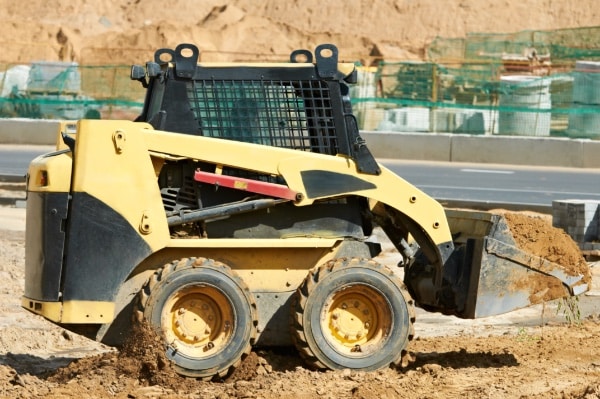
What is the Difference Between a Bobcat and a Skid Steer?
The Melroe Manufacturing Company branded their line of skid steers the Bobcat. However, there is no real difference between the term Bobcat and skid steer. Like how people say “Google it” to mean “search online” or “look it up,” the term “Bobcat” is a brand that is used to refer to skid steer loaders. Other brands like John Deere and Cat skid steers generally have the same functions, so the term “Bobcat” is just another way to refer to skid steer loaders.
The different brand names are just one way you can refer to the same piece of equipment, regardless of its actual brand. They all can utilize various skid steer attachments, whether it’s a John Deere or Keller loader.
What Should You Not Do with a Skid Steer?
When using a steer loader, it’s important not to leave the machine unattended as a basic safety measure. It’s also crucial that the rated operating capacity is not exceeded so that no harm comes to the operator or the machine. If the skid steer tips over, it can result in costly medical bills, lawsuits, and replacement expenses, in addition to lost time and wages for the entire crew.
To prevent accidents, ensure that only qualified workers operate the machinery and educate everyone on safety procedures with the skid steer. As long as everyone is aware and educated on the matter, there should be no issues. We also offer some skid steer safety tips and you should definitely go over those with your skid steer operators.
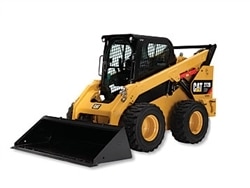
Can You Dig a Hole with a Skid Steer?
Of course! With a backhoe, you can easily dig a hole or a trench with a skid steer of any size. If you need to go underground for construction or you need to dig out a secure place for workers to gather while they work on installing wires, a backhoe can create the necessary trench without overexerting the workers.
Is It Better to Buy or Rent Skid Steer Loaders?
When it comes to cost efficiency, is it better to buy a skid steer or rent one? That depends on the needs of your company and your future projects. It may be easier to rent short-term, but long-term usage may prove more advantageous if you purchase a machine outright instead of leasing over and over.
Examine the benefits of each before making your decision, and consult others in your field to see what looks best on paper and what works best in the field.
Pros and Cons of Buying
Buying the steer loader ensures that it’s entirely yours, but that means it’s up to you to maintain it. As a benefit, you can rent out the machine yourself to make money back in your downtime, and you can buy or rent the attachments you’ll need since you won’t have to worry about renting the machine again and again.
It all depends on the frequency of your projects. If you need to use a skid steer often, purchasing may be in your best interest.
Pros and Cons of Renting
The downside with renting is that you don’t own the steer loader, so you are subject to acquiring one from a third party if and when available. The benefit to this is that you don’t have to pay to maintain the upkeep yourself, and you can rent out whatever attachment you’ll need for the job separately.
It will save you time and money if you’re not consistently using the steer loader to rent instead of buy. However, in busy times you may not be able to secure the equipment, which means you may have to push deadlines back due to demand.
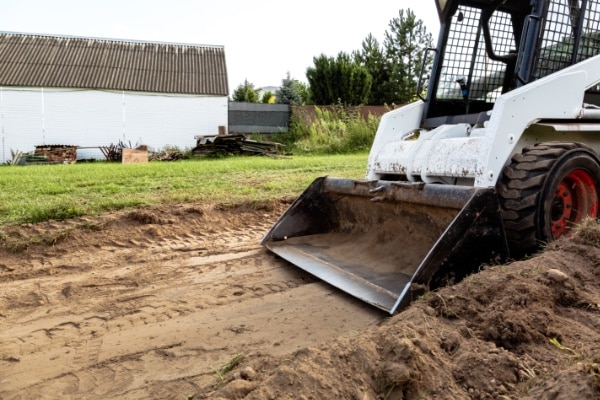
The Bottom Line
A steer loader is an incredibly versatile machine used in construction to dig trenches, landscape, move heavy equipment, and more. There are pros and cons to buying and renting the machine, but it ultimately depends on your financial needs.
Picking the right frame and attachment will help you be successful on the job, no matter what task you’re trying to complete. Examine your needs for the job and decide what’s best for you!